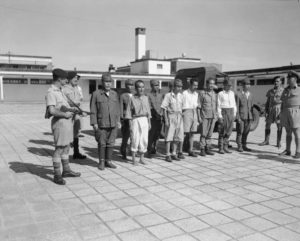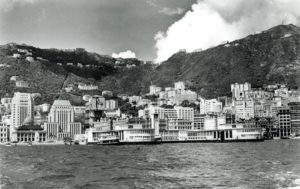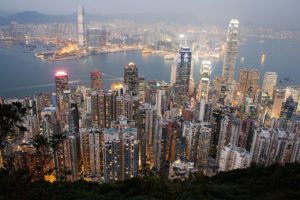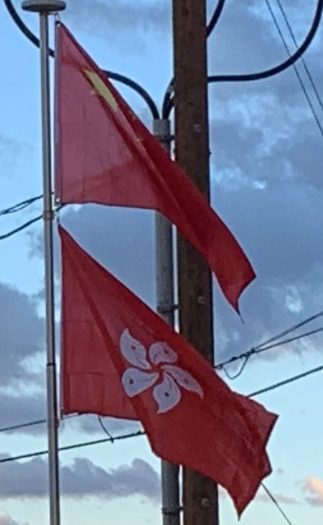
Its population rebounded quickly after the war, as skilled Chinese migrants fled from the Chinese Civil War, and more refugees crossed the border when the Communist Party took control of mainland China in 1949. Hong Kong became the first of the Four Asian Tiger economies to industrialize during the 1950s.

With a rapidly increasing population, the colonial government began reforms to improve infrastructure and public services. The public-housing estate programme, Independent Commission Against Corruption (ICAC), and Mass Transit Railway were all established during the post-war decades to provide safer housing, integrity in the civil service, and more-reliable transportation. Although the territory’s competitiveness in manufacturing gradually declined due to rising labor and property costs, it transitioned to a service-based economy. By the early 1990s, Hong Kong had established itself as a global financial center and shipping hub.
The colony faced an uncertain future as the end of the New Territories lease approached, and Governor Murray MacLehose raised the question of Hong Kong’s status with Deng Xiaoping in 1979. Diplomatic negotiations with China resulted in the 1984 Sino-British Joint Declaration, in which the United Kingdom agreed to transfer the colony in 1997 and China would guarantee Hong Kong’s economic and political systems for 50 years after the transfer. The impending transfer triggered a wave of mass emigration as residents feared an erosion of civil rights, the rule of law, and quality of life. Over half a million people left the territory during the peak migration period, from 1987 to 1996. Hong Kong was transferred to China on 1 July 1997, after 156 years of British rule.
Immediately after the transfer, Hong Kong was severely affected by several crises. The government was forced to use substantial foreign-exchange reserves to maintain the Hong Kong dollar’s currency peg during the 1997 Asian financial crisis, and the recovery from this was muted by an H5N1 avian-flu outbreak and a housing surplus. This was followed by the 2003 SARS epidemic, during which the territory experienced its most serious economic downturn.

Political debates after the transfer of sovereignty have centered around the region’s democratic development and the central government’s adherence to the “one country, two systems” principle. After reversal of the last colonial era Legislative Council democratic reforms following the handover, the regional government unsuccessfully attempted to enact national security legislation pursuant to Article 23 of the Basic Law. The central government decision to implement nominee pre-screening before allowing Chief Executive elections triggered a series of protests in 2014 which became known as the Umbrella Revolution. Discrepancies in the electoral registry and disqualification of elected legislators after the 2016 Legislative Council elections and enforcement of national law in the West Kowloon high-speed railway station raised further concerns about the region’s autonomy. In June 2019, large protests again erupted in response to a proposed extradition amendment bill permitting extradition of fugitives to mainland China. The protests have continued into October, possibly becoming the largest-scale political protest movement in Hong Kong history, with organizers claiming to have attracted more than one million Hong Kong residents.
Geography:
Hong Kong is on China’s southern coast, 60 km (37 mi) east of Macau, on the east side of the mouth of the Pearl River estuary. It is surrounded by the South China Sea on all sides except the north, which neighbors the Guangdong city of Shenzhen along the Sham Chun River.
